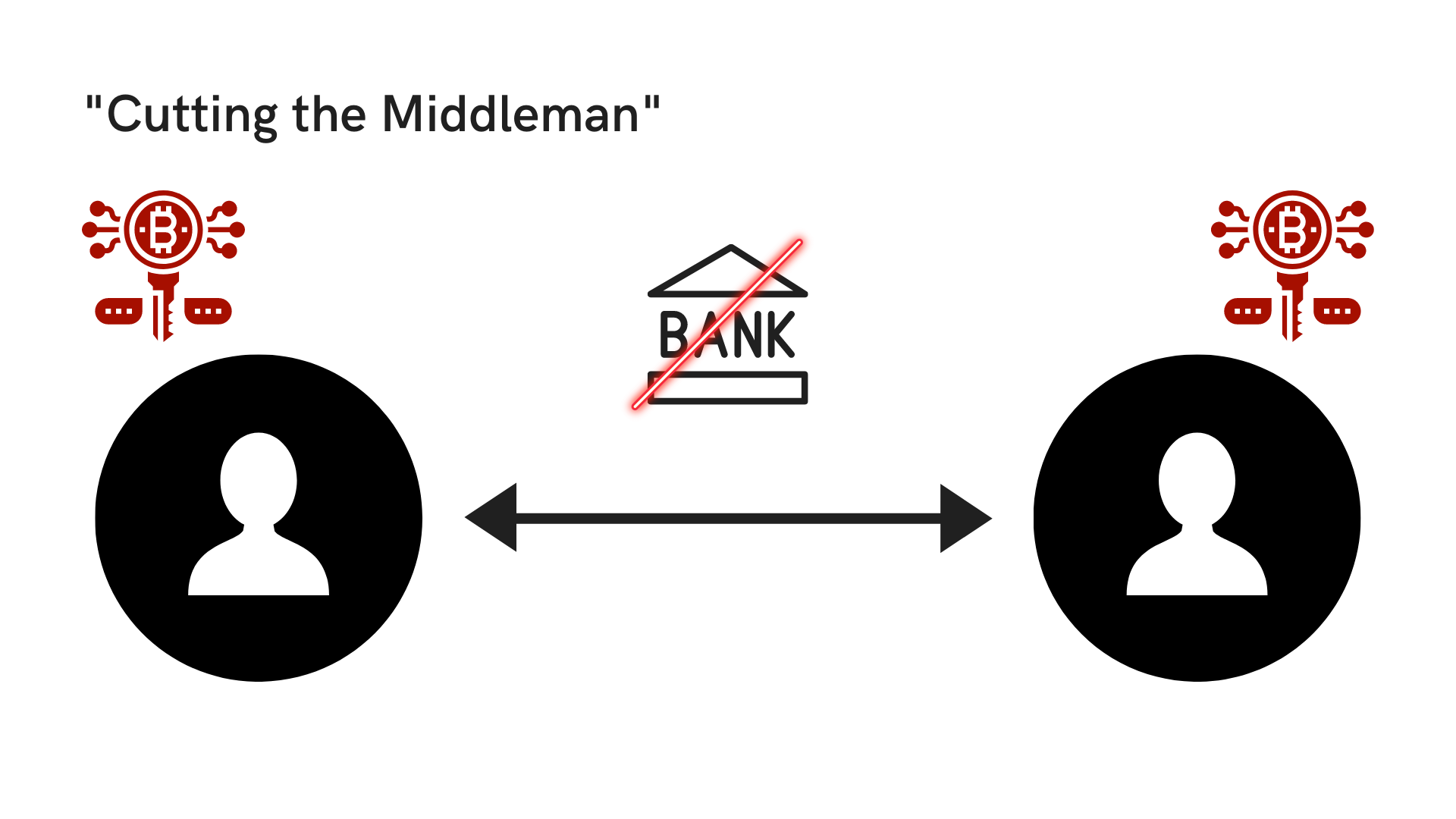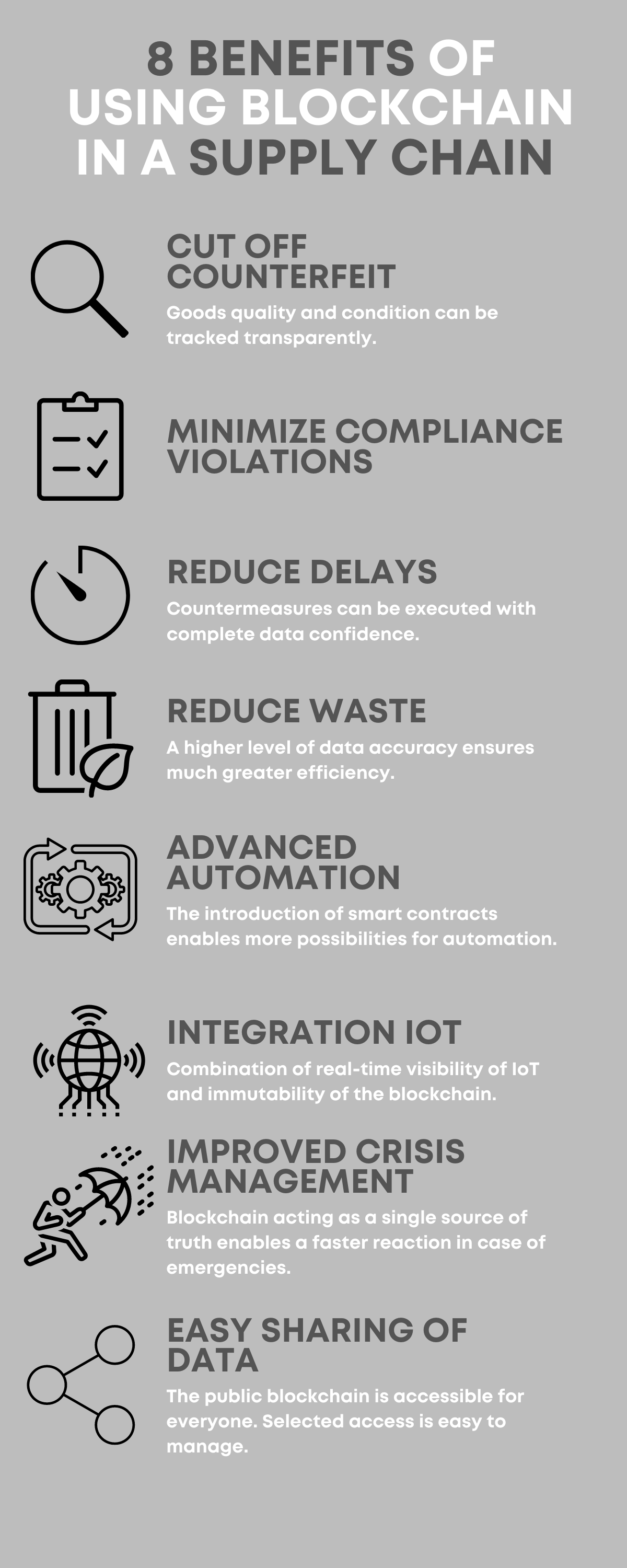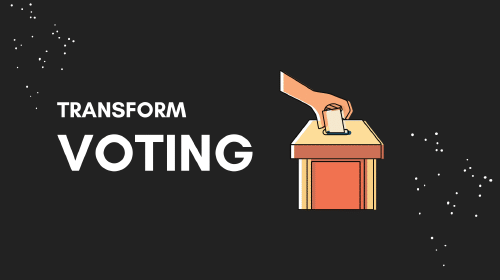Blockchain Technology for Tracking and Tracing in Supply Chain Management
Salomon Kisters
May 28, 2021This post may contain affiliate links. If you use these links to buy something we may earn a commission. Thanks!
This recent pandemic has given us a lot to think about regarding our complex global supply chain. With significant delays affecting the movement of goods across the globe, organizations of all types have finally had to acknowledge just how fragile these supply chains can be. When everything works as it should, the complexity is hidden, and you don’t have to worry about inefficiencies. But when things go wrong – that’s when it all comes to the surface.
What’s clear to see is that in order to run a sustainable, efficient supply chain – you rely on timely, accurate data about your logistics. The quality of your data is paramount because that’s what you are going to use to implement changes, shift strategy, and make moves to keep the momentum going. If you don’t have a precise sense of exactly where goods are throughout your value chain, you have no way of adapting. You find yourself with no agility and no way to make intelligent decisions – which leaves you vulnerable to changing market circumstances that you can’t control.
This is not to mention the losses that you incur through malicious actors who know how to manipulate your supply chain to enrich themselves. At a particular scale, you can’t play policeman on every branch of that system – you have to use data to identify problems and help you prioritize how you should be deploying resources. That’s the only way you can feasibly manage supply chains once they grow past a certain size. If you turn a blind eye, you’re at the whims of individuals who can scupper your margins through tampering with documentation and essentially stealing resources.
The only way you fight back and build a sustainable supply chain as you scale is through superior data. And that’s where blockchain technology can play a significant role.
The Impact of Blockchain
Blockchain technology is relatively new in the greater scheme of things. Still, it has already become somewhat of a cultural phenomenon – being touted as one of the most important inventions in this century. While some only see the price speculation and write it off because of that, the industry bubbles underneath with many of the most competent people in the world building applications that leverage the idea.
We won’t go into technical detail here, but essentially, blockchain technology disintermediates 3rd parties by allowing individuals and organizations to engage meaningfully with others that they don’t necessarily trust. The best analogy to understand it is in a financial construct. Two individuals can send each other a store of value without relying on a bank or financial institution in the middle. Both parties can be assured that the value is legitimate, verified, and cannot be spent twice. The blockchain creates a single source of truth without needing anyone to be the judge of that truth.

This is enabled through a single ledger that is effectively decentralized and protected by some really fancy mathematics and cryptography. And after decades of building up giant institutions whose entire role was to act as a trusted intermediary, this seems a little foreign to some people. But the potential, once you get your head around the idea, is limitless.
The moment that you can verify the accuracy of a piece of information in a way that doesn’t allow for individual human manipulation – it changes the game entirely.
Blockchain technology goes well beyond financial applications in this regard. There are plenty of industries that can benefit from a single source of truth that isn’t controlled by any single individual or organization. We can finally start to build an economy that is impervious to corruptive power in all its forms. The future of this technology is incredibly exciting.
How Does This Affect Supply Chains?
The natural next question is to see how this technology will have an impact on supply chains around the world. As a society, we’ve been iterating on how we build supply chains for centuries now in an attempt to make our globalized world function efficiently. On a macro scale, the global logistics machine is constantly moving goods through a step-by-step process that aims to smooth out any potential mistakes and ensure that your goods get to where they need to be when they need to be there. And on a micro-level, your organization needs to have a watertight understanding of your current operations and where your goods are in the process so that you have a handle on the business itself.
We’ve seen an entire industry develop around the documentation of such a process so that we can keep track of what we are doing. Software providers have built incredibly complex systems that can scale with large organizations. The administrative staff has picked up reams and reams of additional work in terms of managing everything from the order process right up to final delivery. Along every step of the value chain, stakeholders must enter status data in some system or other so that there is always a view as to where everything is and where it’s going. This started with paper, of course, but has slowly been transforming into sophisticated digital systems that can track every single piece of inventory from the time it leaves your warehouse to the moment it is delivered to the end-user.
The industry verbiage here is track and trace.
This transformation has done wonders for not only organizational management but also for the customer experience of the end-user. Instead of wondering what’s going on, we collect data at every possible touchpoint, so we are in no doubt as to where things are. We sometimes take for granted that as a customer, we can plug a tracking code into a text box and see exactly where our parcel is, anywhere in the world, at any time. That level of visibility just wasn’t possible just a few decades ago, and it’s a mark of how this industry has transformed itself in this new world.
This ability to track and trace is crucial for being able to respond to problems and issues as they arise, but it also helps to analyze longer-term trends and operational complexities that affect the overall sustainability and profitability of the organization.
It’s not an overstatement to say that superior track and trace capabilities are what set apart the good companies from the great when it comes to supply chain operations. It has become a competitive advantage. We’ve seen market leaders like Amazon build incredibly complex and optimized supply chains on the back of a powerful track and trace system that is the basis for everything that they do. In some ways, these companies become data companies rather than logistics companies. This is especially true when you are outsourcing many of the actual logistical components to specialists; your business becomes the management from a bird’s eye perspective.
But none of this works if the data is not accurate. At the end of the day, your system is only as strong as the quality of data it is fed. And when you have a complicated documentation process and system with lots of different people having input – there are naturally going to be holes and cracks which develop. You are going to have people cutting corners or misunderstanding the process, human error creeping into your procedures, or inefficiencies developing as the system responds to changing economic and logistical requirements.
All of this leads to data that is not as accurate as it should be. And this is something that blockchain technology can help to solve in a way that has never been possible before.
The Problem of Data Tampering
In every organization, big or small, you are going to have to deal with people trying to take advantage of the position that they’re in. No matter how carefully you vet new employees or potential suppliers and partners, you have to accept that you will be up against malicious actors in some way or form. And the bigger you get, the easier it is for them to operate in the shadows and get away with whatever they’re doing.
We see this all the time in supply chain contexts where a lot of your employees and/or partners who are doing the transporting, receiving, and the like tend to be somewhat autonomous in what they do. They are often subcontracted or feel far away enough from the core company mission to rationalize their actions. This gives them the opportunity and headspace to cut some corners and take advantage of the position that they’re in without really seeing the consequences of their actions. In the greater scheme of things, they are just a tiny cog in a large system, and in order to get away with it, all they need to do is tamper with the relevant documentation in order to give themselves plausible deniability and they’re off to the races. In a system that relies on manual input and trusted intermediaries, there is an infinite number of ways to tamper with that information.
As a leader, you are relying on that information as your only eyes on what happened, and if it all checks out, it’s challenging to identify precisely where potential theft or counterfeiting has occurred. You are placed in a challenging position where you have to be the judge of a he-said, she-said situation. Your only refuge was the captured data, but if that’s tampered with, it’s almost impossible for you to sort it out.
This means that every step along your process is a single point of failure that can be subtly manipulated with just a little understanding of how the system works. Companies have tried all sorts of things to minimize this, but it remains a severe problem in the industry that causes substantial damage to the bottom line and to the company’s reputation when the customer experience suffers. It causes more headaches than it’s worth, that’s for sure.
It’s been an industry dream for a long time to build a trust-less supply chain where you don’t have to worry about the issue of data tampering because the data speaks for itself. One in which you can trust your systems that they are accurately reflecting the objective reality of your business. And with blockchain, it’s finally here.
A Blockchain-Enabled Supply Chain
When you apply the tenets of the blockchain to create a trust-less logistics process, you are essentially creating one single source of truth. The blockchain ledger eliminates the opportunity for any one individual or node in the network to tamper with the information that it contains because the records are immutable and not owned by any party. When you get this right, what you have in your hands is an incredibly valuable source of data because you can rely on its accuracy. This opens up all the other potential benefits that have a significant impact on how your organization functions.
Here are just a few of the key benefits:

Combats counterfeit goods. When you’re working with external suppliers or providers, this system can help to ensure that the goods that you’re receiving are exactly what you expect them to be. This ability to track precisely where they came from and who is responsible for them is a massive help in verifying the source. When scaled up to large volumes, this technology helps to cut off the counterfeit market at its knees and rewards the actual producers as they should be rewarded. It’s a huge win for ethical sourcing.
Minimizes compliance violations. In any organization, you are going to be setting various policies and procedures to protect the quality of whatever you are producing. This is a crucial proactive measure in terms of quality control to hold yourself to a very high standard. And in some cases, this is forced through regulatory pressure. An immutable blockchain is an incredibly sound audit trail that is worth its weight in gold when you need it. But it’s also just good business. Enforcing these compliance measures is made much more efficient through the use of blockchain because you have an accurate view of the reality on the ground with complete trust that your data is correct.
Reduces delays. A single source of truth ensures that you are in complete control of the entire process, and you can make adjustments as needed to reduce the risk of delays. When every action is stamped into the blockchain, you can take the steps that you need with complete confidence that it’s going to make a tangible difference in the process. You’re gifted with much more precise optimization opportunities than were previously possible.
Reduces waste. With this higher level of data accuracy, you can achieve much greater efficiencies in terms of planning and strategic operations. Instead of having to leave lots of buffers to take care of tampering, waste, theft, and the like – you can be much more exact with every execution and can run much leaner as a result. This compounds over time to be a significant saving for your organization while also making it more sustainable over the long term.
Advanced automation. When you have data that you can trust, and you’re not overly relying on intermediaries, a range of new opportunities for automation open up to you. When connected to smart contracts and other blockchain structures, a verified piece of data can catalyze a wide range of further actions that serve to remove the need for human involvement where it’s not needed. This is the exciting future that we foresee that goes way beyond the current value proposition.
Nuanced integration with the Internet of Things (IoT). We’ve seen incredible advancements in terms of smart devices and pieces of equipment that fall under the banner of the IoT ecosystem. As the cost of this technology has come down, it’s become even more feasible to use low-cost sensors and other equipment to monitor every single step of the process and feed data back automatically without any human intervention whatsoever. This connected network of devices provides a level of real-time visibility into a supply chain that previously we wouldn’t have dreamed of. When this is integrated with an immutable blockchain, it gets even more powerful. All of a sudden, you have an army of devices capturing critical data in real-time and providing proof along the way of every action that gets taken. It’s a fascinating combination.
Improved crisis management. In those rare occasions where you face a crisis or emergency in terms of your products, the speed of your response is going to make a significant difference to the outcome. For example, if you need to recall products because a problem has been discovered, there is substantial reputational and financial damage that can be averted if you can act swiftly and decisively. In these situations, a single source of truth that is verified is precious so you can know exactly where all those products are, and you can go and ensure that you get them as efficiently as possible.
Sharing selected data with third parties. In some cases, an organization needs to share certain pieces of data with investors, suppliers, regulators, etc. This could be for a wide variety of reasons. If you’re able to simply point to a specific part of your immutable ledger, which you can trust, it saves a lot of wasted time and effort that would typically be required to surface that information appropriately. If you wanted to push the boundaries even further, you could even leverage a concept known as zero-knowledge proofs, which use blockchain technology to verify critical pieces of information without actually revealing the underlying data itself. This is especially valuable when you have confidential client information that you don’t want in the hands of a third party. We’re likely to see lots of innovation here in the near future – so be sure to watch this space.
Those are just a few of the benefits that are possible when you integrate blockchain technology into your supply chain. These advanced track and trace capabilities are a game-changer for any company that wants to take its operations to the next level.
The OriginStamp Solution
Here at OriginStamp, we’ve been excited by this potential for a long time, and it’s the reason we exist – to help companies integrate this incredibly powerful technology into their existing workflows in a way that actually moves the needle for the business.
At its core, our offering enables tamper-proof time stamps to be applied to your digital assets of all kinds. This could be a document, a piece of data, or any other digital asset that helps you to run your business efficiently. These timestamps help to verify that an item was in a particular location at a certain time – and forms the building block for all the exciting innovations that are possible on top of that data.
These timestamps form the basis of our completed automated audit trail that can include as many or as few events as you would like – thanks to our API. We’ve gone above and beyond to make this interoperable as much as possible so it can plug into your existing systems without fuss. So, you can get the benefit of the blockchain without having to rebuild everything from scratch necessarily.
This timestamp data becomes the single source of truth for your supply chain, and it can be leveraged to prove the originality and the existence of any digital asset at any point in time. It’s magical if we do say so ourselves.
If this sounds like a solution that would make a difference for your business, please do get in touch. We’d love to hear your story and hear how we can help out.
We genuinely believe that this is the future of digital asset verification and that it’s going to revolutionize the way that supply chains are built and managed. We would love the opportunity to show you how it can transform the way you do things.
Stay informed with the latest insights in Crypto, Blockchain, and Cyber-Security! Subscribe to our newsletter now to receive exclusive updates, expert analyses, and current developments directly to your inbox. Don't miss the opportunity to expand your knowledge and stay up-to-date.
Love what you're reading? Subscribe for top stories in Crypto, Blockchain, and Cyber-Security. Stay informed with exclusive updates.
Please note that the Content may have been generated with the Help of AI. The editorial content of OriginStamp AG does not constitute a recommendation for investment or purchase advice. In principle, an investment can also lead to a total loss. Therefore, please seek advice before making an investment decision.

How Blockchain Voting Systems Transform the Way We Vote
Guaranteeing secure and transparent elections nowadays is almost impossible. Find out how Blockchain Voting Systems can make the voting process more transparent

How Blockchain Technology Benefits Everyday Business Owners
Blockchain technology offers numerous benefits to everyday business owners, including establishing trust, enabling value transfer, establishing contracts, providing timestamps, implementing smart contracts, facilitating audits, and offering custom solutions.

Ethereum: Decentralized Blockchain Platform & Use Cases
Learn about Ethereum, a decentralized blockchain platform with smart contract functionality. Explore its use cases, how to buy Ether, and the benefits of OriginStamp.
Protect your documents
Your gateway to unforgeable data. Imprint the authenticity of your information with our blockchain timestamp